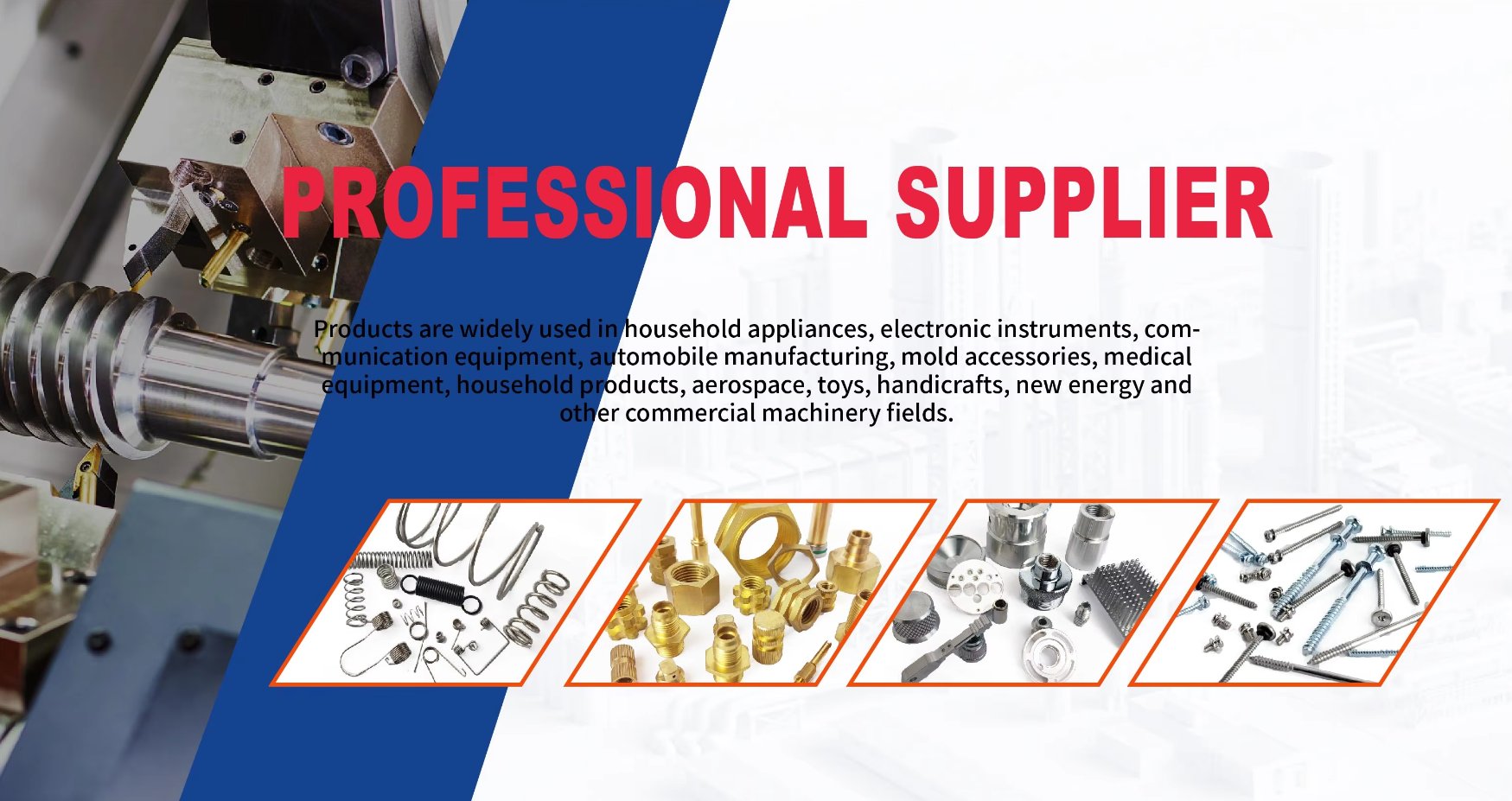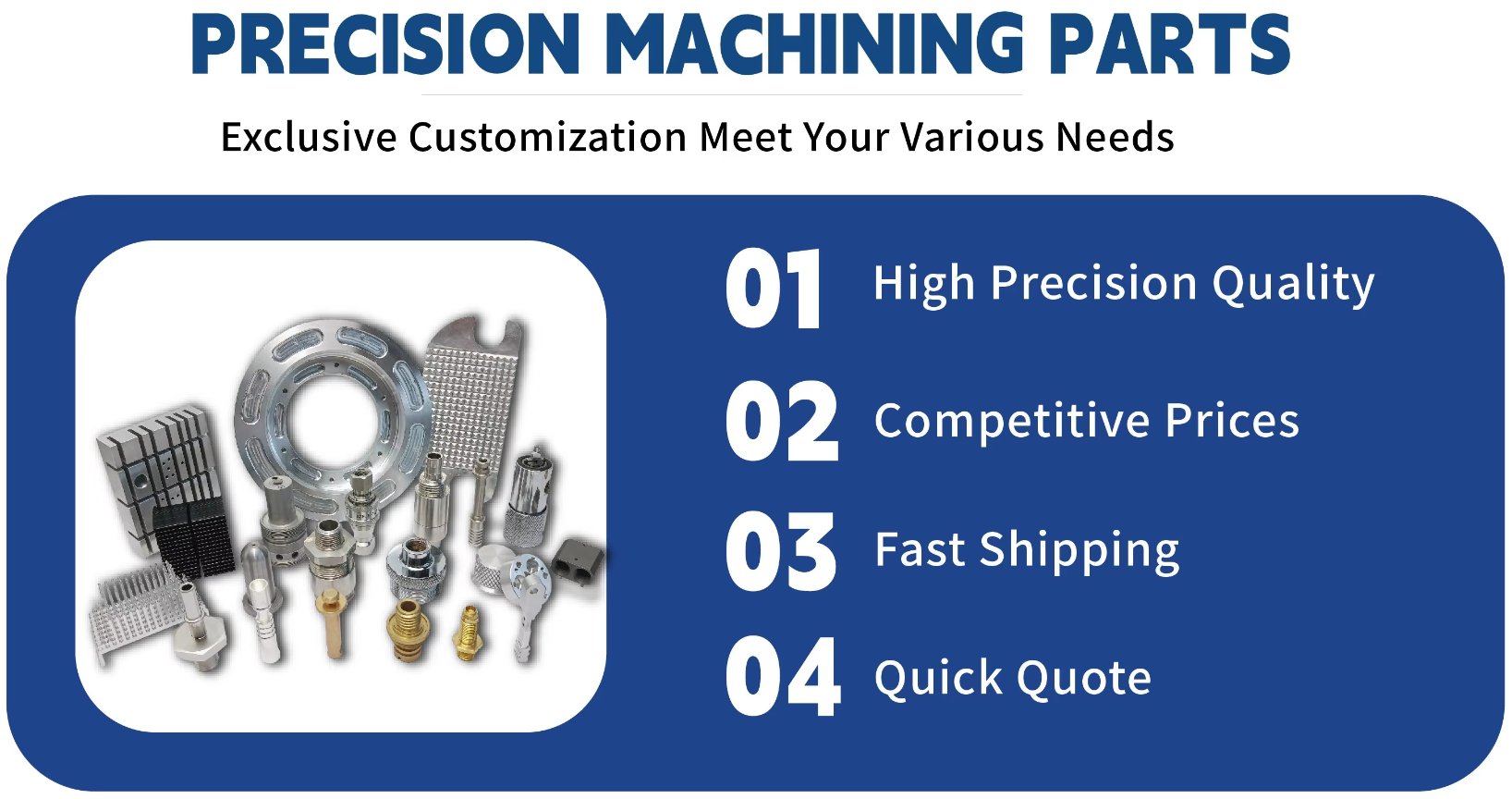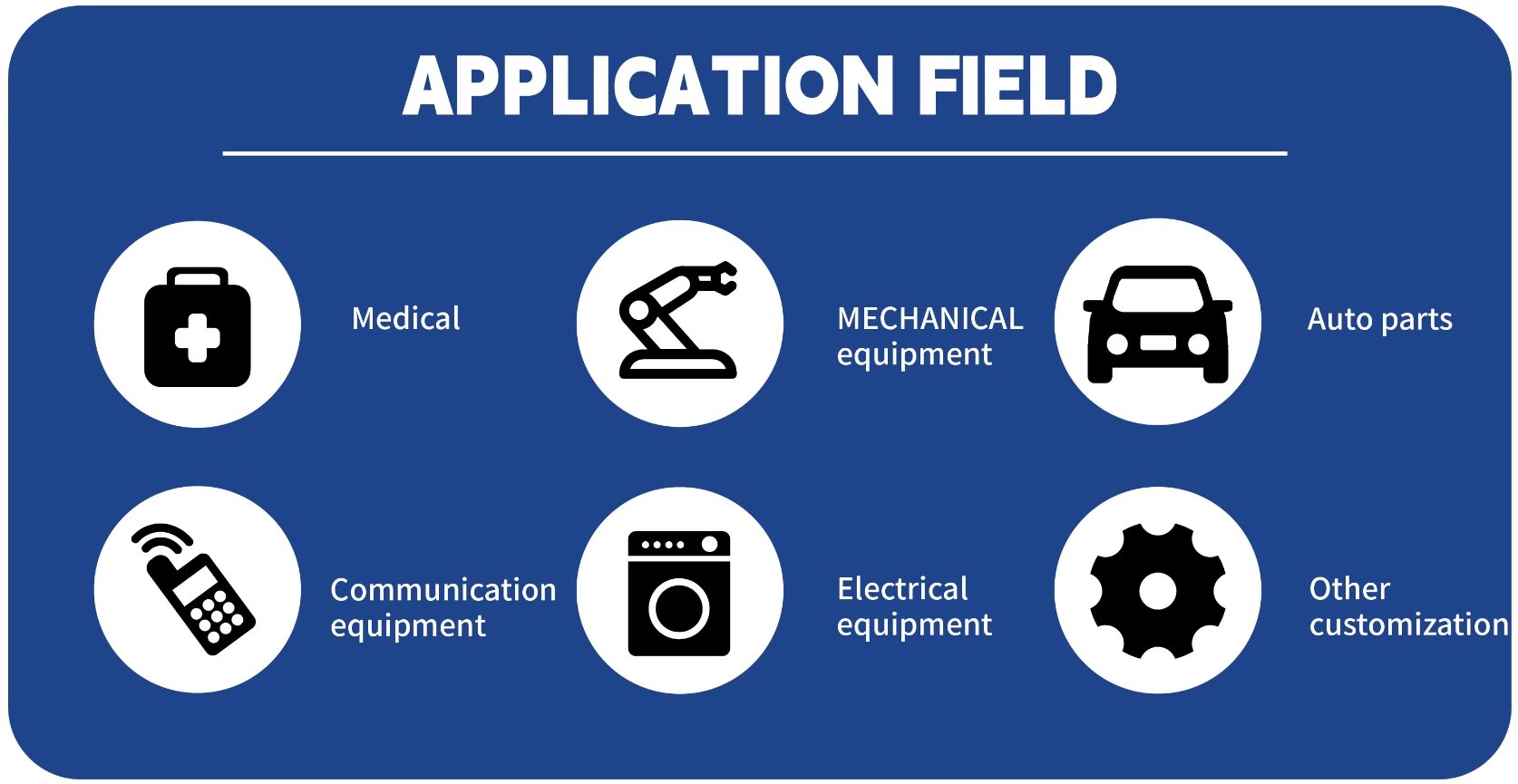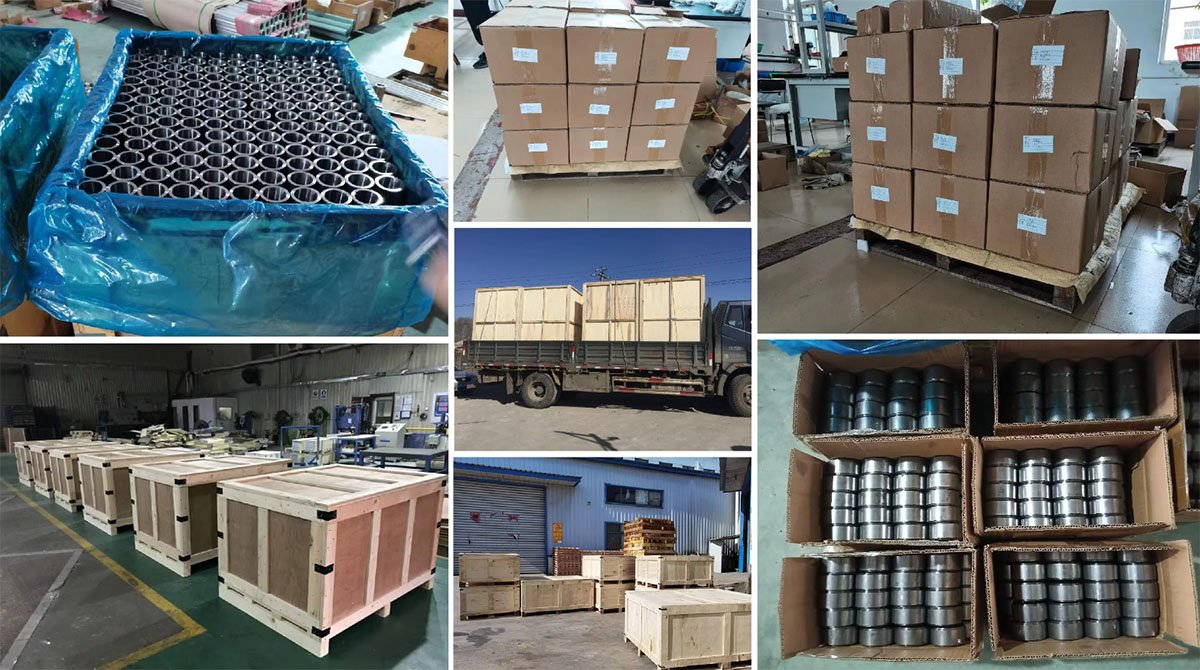





















About this product:
• Durable Construction: The PY4/6/8/10/12/16 Pneumatic quick connector is made from high-quality PBT plastic, ensuring a long-lasting and reliable performance in various environments.
• Versatile Application: This product can be used with a wide range of materials, including aluminum, brass, bronze, copper, hardened metals, precious metals, stainless steel, and steel alloys, catering to diverse user needs.
• Micro Machining Capability: The product supports micro machining, allowing for precise and intricate designs, meeting the requirements of users who need complex pneumatic fittings.
• Fast Delivery: With a minimum order quantity of 100pcs and a delivery time of 3-15 days, this product ensures timely supply to meet the urgent needs of users.
• High-Quality Assurance: The product undergoes 100% quality inspection, guaranteeing that each item meets the highest standards of quality and performance, as requested by the user.













| Place of origin | Qingdao, China |
| Brand name | Speed worth |
| Product name | Pneumatic fitting air pipe |
| Material | PBT plastic |
| Type | PY-4/6/8/10/12/16 |
| Environmental temperature | 0-60℃ |
| Pressure resistance | 1Mpa |
| MOQ | 100pcs |
| Color | Natural color |
| Packing | Customisation |

High Precision:One of the primary features of precision machining is its high degree of accuracy. By utilizing advanced machining equipment and processes, precise control over part tolerances can be achieved, often reaching micrometer or even nanometer levels. This level of precision is essential for industries such as aerospace, aviation, and precision instrumentation.

High Precision:One of the primary features of precision machining is its high degree of accuracy. By utilizing advanced machining equipment and processes, precise control over part tolerances can be achieved, often reaching micrometer or even nanometer levels. This level of precision is essential for industries such as aerospace, aviation, and precision instrumentation.

High Precision:One of the primary features of precision machining is its high degree of accuracy. By utilizing advanced machining equipment and processes, precise control over part tolerances can be achieved, often reaching micrometer or even nanometer levels. This level of precision is essential for industries such as aerospace, aviation, and precision instrumentation.

High Precision:One of the primary features of precision machining is its high degree of accuracy. By utilizing advanced machining equipment and processes, precise control over part tolerances can be achieved, often reaching micrometer or even nanometer levels. This level of precision is essential for industries such as aerospace, aviation, and precision instrumentation.

High Precision:One of the primary features of precision machining is its high degree of accuracy. By utilizing advanced machining equipment and processes, precise control over part tolerances can be achieved, often reaching micrometer or even nanometer levels. This level of precision is essential for industries such as aerospace, aviation, and precision instrumentation.

High Precision:One of the primary features of precision machining is its high degree of accuracy. By utilizing advanced machining equipment and processes, precise control over part tolerances can be achieved, often reaching micrometer or even nanometer levels. This level of precision is essential for industries such as aerospace, aviation, and precision instrumentation.

High Precision:One of the primary features of precision machining is its high degree of accuracy. By utilizing advanced machining equipment and processes, precise control over part tolerances can be achieved, often reaching micrometer or even nanometer levels. This level of precision is essential for industries such as aerospace, aviation, and precision instrumentation.

High Precision:One of the primary features of precision machining is its high degree of accuracy. By utilizing advanced machining equipment and processes, precise control over part tolerances can be achieved, often reaching micrometer or even nanometer levels. This level of precision is essential for industries such as aerospace, aviation, and precision instrumentation.

High Precision:One of the primary features of precision machining is its high degree of accuracy. By utilizing advanced machining equipment and processes, precise control over part tolerances can be achieved, often reaching micrometer or even nanometer levels. This level of precision is essential for industries such as aerospace, aviation, and precision instrumentation.

High Precision:One of the primary features of precision machining is its high degree of accuracy. By utilizing advanced machining equipment and processes, precise control over part tolerances can be achieved, often reaching micrometer or even nanometer levels. This level of precision is essential for industries such as aerospace, aviation, and precision instrumentation.

High Precision:One of the primary features of precision machining is its high degree of accuracy. By utilizing advanced machining equipment and processes, precise control over part tolerances can be achieved, often reaching micrometer or even nanometer levels. This level of precision is essential for industries such as aerospace, aviation, and precision instrumentation.

High Precision:One of the primary features of precision machining is its high degree of accuracy. By utilizing advanced machining equipment and processes, precise control over part tolerances can be achieved, often reaching micrometer or even nanometer levels. This level of precision is essential for industries such as aerospace, aviation, and precision instrumentation.

High Precision:One of the primary features of precision machining is its high degree of accuracy. By utilizing advanced machining equipment and processes, precise control over part tolerances can be achieved, often reaching micrometer or even nanometer levels. This level of precision is essential for industries such as aerospace, aviation, and precision instrumentation.

High Precision:One of the primary features of precision machining is its high degree of accuracy. By utilizing advanced machining equipment and processes, precise control over part tolerances can be achieved, often reaching micrometer or even nanometer levels. This level of precision is essential for industries such as aerospace, aviation, and precision instrumentation.

High Precision:One of the primary features of precision machining is its high degree of accuracy. By utilizing advanced machining equipment and processes, precise control over part tolerances can be achieved, often reaching micrometer or even nanometer levels. This level of precision is essential for industries such as aerospace, aviation, and precision instrumentation.

High Precision:One of the primary features of precision machining is its high degree of accuracy. By utilizing advanced machining equipment and processes, precise control over part tolerances can be achieved, often reaching micrometer or even nanometer levels. This level of precision is essential for industries such as aerospace, aviation, and precision instrumentation.

High Precision:One of the primary features of precision machining is its high degree of accuracy. By utilizing advanced machining equipment and processes, precise control over part tolerances can be achieved, often reaching micrometer or even nanometer levels. This level of precision is essential for industries such as aerospace, aviation, and precision instrumentation.

High Precision:One of the primary features of precision machining is its high degree of accuracy. By utilizing advanced machining equipment and processes, precise control over part tolerances can be achieved, often reaching micrometer or even nanometer levels. This level of precision is essential for industries such as aerospace, aviation, and precision instrumentation.

High Precision:One of the primary features of precision machining is its high degree of accuracy. By utilizing advanced machining equipment and processes, precise control over part tolerances can be achieved, often reaching micrometer or even nanometer levels. This level of precision is essential for industries such as aerospace, aviation, and precision instrumentation.

High Precision:One of the primary features of precision machining is its high degree of accuracy. By utilizing advanced machining equipment and processes, precise control over part tolerances can be achieved, often reaching micrometer or even nanometer levels. This level of precision is essential for industries such as aerospace, aviation, and precision instrumentation.

High Precision:One of the primary features of precision machining is its high degree of accuracy. By utilizing advanced machining equipment and processes, precise control over part tolerances can be achieved, often reaching micrometer or even nanometer levels. This level of precision is essential for industries such as aerospace, aviation, and precision instrumentation.

High Precision:One of the primary features of precision machining is its high degree of accuracy. By utilizing advanced machining equipment and processes, precise control over part tolerances can be achieved, often reaching micrometer or even nanometer levels. This level of precision is essential for industries such as aerospace, aviation, and precision instrumentation.

High Precision:One of the primary features of precision machining is its high degree of accuracy. By utilizing advanced machining equipment and processes, precise control over part tolerances can be achieved, often reaching micrometer or even nanometer levels. This level of precision is essential for industries such as aerospace, aviation, and precision instrumentation.

High Precision:One of the primary features of precision machining is its high degree of accuracy. By utilizing advanced machining equipment and processes, precise control over part tolerances can be achieved, often reaching micrometer or even nanometer levels. This level of precision is essential for industries such as aerospace, aviation, and precision instrumentation.

High Precision:One of the primary features of precision machining is its high degree of accuracy. By utilizing advanced machining equipment and processes, precise control over part tolerances can be achieved, often reaching micrometer or even nanometer levels. This level of precision is essential for industries such as aerospace, aviation, and precision instrumentation.
From production to delivery, the process was smooth and highly satisfactory.
Great service, fast and direct communication. We are testing the delivered part at the moment. We are very happy with this company.
Leave your email address to receive our newsletter
Copyright © 2024 Qingdao Shiji Pinyang Machinery Manufacturing Technology Co., Ltd. All Rights Reserved.
Powered by HiCheng.
